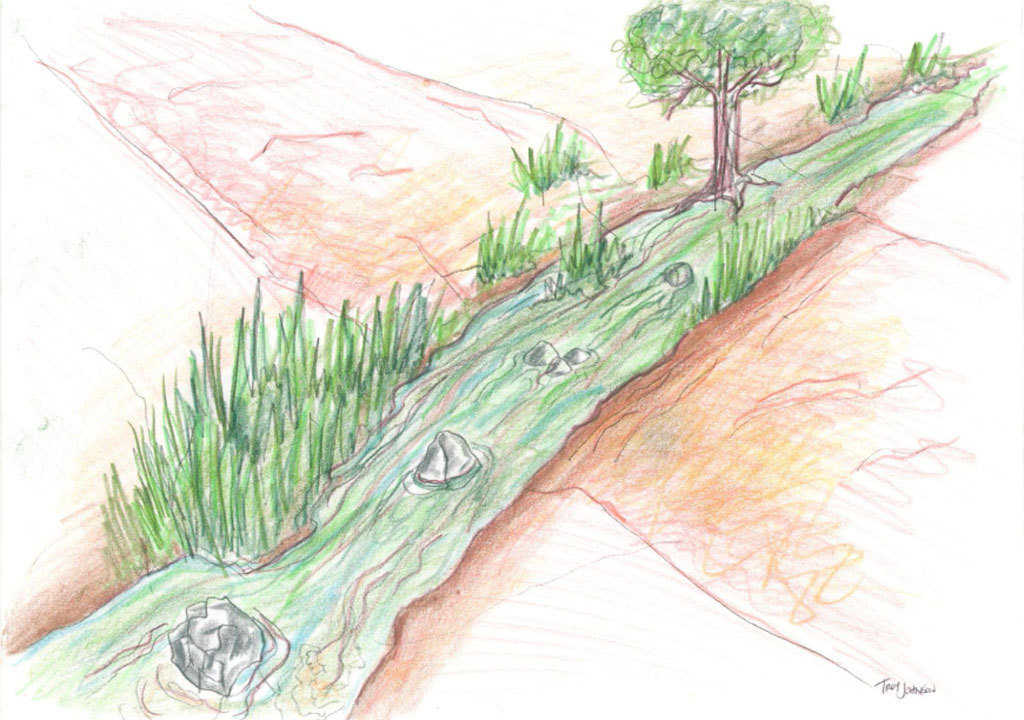Monolithic’s Airform technology can be used to build culverts.
What’s more, this technology produces quality products for less money.
It is far less expensive to build a culvert by using an Airform than to build one any other way. This is especially true in the developing world. Here in the United States, we can contact a company that makes steel or concrete culverts, and, chances are, the desired product can be delivered in a matter of hours. Not true in other parts of the world – and even here it’s not always possible, especially if you need a custom culvert.
But by using an Airform, custom culverts, particularly very large ones, can be constructed easily and economically.
Here’s the process:
It’s fast, simple, extremely secure and can be done anywhere. The concrete doesn’t even have to be shot in place; it can be spread by hand.
In many parts of the world, a three-foot-diameter culvert is all that is needed to make a back-country road serviceable. These culverts are not only easy to build, but can be constructed in multiples. If a stream is large enough, three-foot-diameter culverts can be built in multiples of five or ten to let the stream move through.
The tough, spray-in-place culvert
No doubt some people will fuss about spray-in-place culverts. The fussers will probably say, “We can’t be positive that they won’t leak.” Believe me, the others do leak! They have factory joints that leak!
But the spray-in-place culvert is a reinforced single unit, that is far tougher than a culvert made of fitted-together pieces.
Repairing existing culverts
Existing culverts can be shotcreted if they have diameters large enough for a crew to work in. Such shotcreting is not often done simply because most engineers don’t know about it. Nevertheless, shotcreting is an extremely viable alternative for repairing large culverts. Workers can go inside and attach new reinforcing and spray it in. This is far simpler than tearing up streets or roadways to put in a new culvert and, usually, it costs less. Using this technology, large drain pipes, including sewers, also can often be repaired.
For more information on Airform construction, please contact us with the specific details related to your culvert project.
June 26, 2005
July 31, 2013

Forms for bottom — The water first diverted temporarily, while crews will form the bottom part of the culvert.

Set rebar — Now the crews will make the rebar cage needed to reinforce the concrete and place it in the hole. Then concrete is poured to form the bottom of the culver, and to hold the steel in place.

Airform inserted — Now the Airform is slid into the rebar cage and inflated, making an easy job out of applying the concrete by hand.

Finished culvert — Once the concrete dries, simply slide the airform out to be used again and again. The dirt can be backfilled in a few days, and you have a simple, permanent, culvert.

End Cap — We used this technology to spray some end caps on the ends of our existing culverts. These culverts had been damaged by trucks, so we bent them back to shape and used out Airform to spray on new ones.

Ready for concrete — Here the bottom has already been poured with the steel embedded. Now the crews have inflated the form, and will begin to spray shotcrete on the outside. This could just as easily be done by hand, and in many places is more efficient.

Finished culvert — This is a finished culvert that was sprayed in Italy, Texas.

Airform being tested — This is a 10 meter long culvert Airform that is being tested at our facility in Italy, Texas.

Easy to transport — This 10 meter long culvert Airform can be easily transported by one man to any destination, making it extremely versatile.

This small inflator fan is all that is needed to keep the airform inflated.

These culvert forms can be any size. The one shown has a diameter of 125 cm (7 ft) and a length of 8 meters (26 ft). Monolithic culvert forms are designed and built to last for centuries. They can be reinforced with basalt rebar that will never rust. (Don Garrison)
